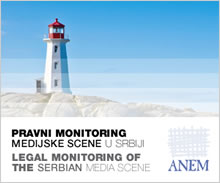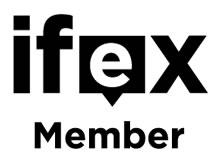21. 04. 2014
BEST WAY FOR TV RECEPTION
21. 04. 2014 (Danas; By C.M.) - Viewers have for several years had a choice when it comes to receiving quality TV content, but the majority has chosen satellite broadcasting. According to the latest results of the annual market survey "Satellite Monitor" for 2013, satellite remains the most widespread way to receive TV signal - 35 percent of European households receive the signal via satellite, 27 percent via cable networks, and 29 percent by DDT.
There are several elements and advantages that are crucial for end users, but also for providers who offer content to their customer base. Satellite broadcasting offers excellent image quality, and this platform is the market leader due to improvements and innovations it brings. A short time has passed from the introduction of HDTV to our markets, and there are already concrete plans to launch a new generation of TV signal - Ultra HD - which provides four times the resolution of HDTV.
Another advantage of the satellite platform is the variety of TV and radio content available to users and providers. SES, the world's leading satellite operator, via its 56 satellites offers more than 6,200 channels, including more than 1,800 HD TV channels. This means that TV providers can create attractive offers for different customer segments and households which use satellites for watching various TV channels, with several thousand available free of charge (FTA channels). The main European orbital position of the SES company, Astra 19.2 E, is the "home" for leading TV broadcasters, including the European public television (ZDF/ARD, ORF, France Televisions, TVE, RAI, TVP) and DTH platforms. Survey data show that a total of 114 million TV households across the continent are serviced via the orbital position 19.2 E. Since this is the most popular satellite position in Europe, it is the best choice for public broadcasters who wish to target national minorities living outside their country. Overall, SES ASTRA increased its range and now reaches 291 million households around the world and 151 million households in Europe, which has proven its strong (market) position for satellite distribution.
One of the main advantages of the satellite platform is that it offers a much wider geographical coverage, making high quality TV services available in the so-called "white areas," where channels broadcasted terrestrially may not be available due to various reasons. This advantage makes DVB -S very attractive for TV providers, who provide full market and customer base coverage through one satellite operator, regardless of the distance from the household. All leading TV providers are looking for ways to improve the offer to their customers. SES is developing a series of innovations that will change the way households receive and use TV content. One of the most significant examples is technology called SAT > IP, which transforms TV signals from satellites to signals to be used by IP devices. This means that if users have several computers, laptop devices, tablets, smart phones, game consoles, and other IP devices at home, they can watch satellite television on all these devices without the need for any additional installations.
The above mentioned benefits are just some of the reasons why the satellite platform is becoming increasingly popular among end-users and TV providers. In addition to its unrivaled range and other advantages mentioned above, the satellite offers a fixed cost structure that does not depend on the number of households receiving the TV signal, which is another big advantage of the satellite compared to the alternatives.
-
No comments on this topic.





